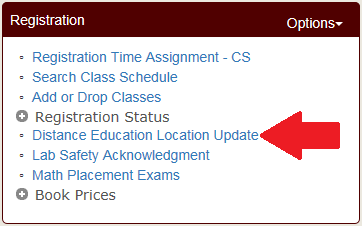Many students choose to take some online courses at both Blinn and A&M. Your TAP advisors urge TEAM students to think carefully before taking online courses at A&M. The biggest benefit of the TEAM program is that it provides as many students as possible the chance to have the four-year Aggie experience. If your main A&M course is online you will miss out on the Texas A&M University classroom experience that semester.
There are three main reasons TEAM students sometimes choose to take online courses at A&M:
- Students who commute from outside the local community minimize travel and save time by taking online courses.
- Online courses can help students avoid scheduling conflicts—assignments can be accomplished any time around students’ other courses or jobs.
- Often the traditional sections of a course are restricted to students who are currently in a particular major. Students outside that major who want to experience a course in that subject must register for the unrestricted online section or wait until they have transitioned into that major before taking the course.
- Example: The regular section of Sport Management 304 is only available to current Sport Management majors, whereas the online section is available to students who are not yet Sport Management majors.
- Example: The regular section of Health 231 is only available to current Health majors, whereas the online section is available to students who are not yet Health majors.
Before students are able to register for online courses they may be required to update their “Distance Education Location” in Howdy. This is done in “My Record” within the “Registration” box:

Observant students will notice that there are two types of online courses listed in the Schedule of Courses—those that have a 500 series section number (usually 599), and those that have a 700 section number (usually 700). There are important distinctions between these types.
599 sections
- Online sections intended for students who are in the local area, so there might be a requirement to meet on campus during the course
- Campus fees are assessed
700 sections (“Distance Education”)
- Online sections intended for students who are away from campus (although students who are in the local area may still register unless otherwise restricted)
- No campus fees are assessed…so students who are ONLY registered for this course will not pay for, and not have access to, the Student Computing Centers, Student Health Center, Student Recreation Center, campus buses, and other campus services
- Students can purchase some campus services
Even though students who enroll in the 700 section of an online course avoid paying for campus services, there is a significant charge associated with taking a distance education course. This charge varies by college and/or department, ranging from a minimum of $40 per semester credit hour to a maximum of $550 per semester credit hour! This means a three-credit hour distance education course could have an additional charge of up to $1,650! (The average charge is about $250 per credit hour, or about $750 for a three-credit hour course.)
A chart that lists the distance education charge per semester credit hour for each college/department can be referenced here: http://sbs.tamu.edu/accounts-billing/tuition-fees/schedule/#DIST_ED_DIFF. If the student is only taking one A&M course, and that course is a 700 section, the student won’t be disadvantaged too much because the campus fees are not charged. However, if the student is taking other A&M courses along with a 700 section, that student pays BOTH the campus fees AND the distance education fees. This information is not widely known.
Occasionally we have encountered a few TEAM students who registered only for a three-credit hour 700 section course. These students later discovered that they were unable to use the Student Health Center or Student Recreation Center, or access other campus services. Had these students been enrolled in any other traditional courses they would have been charged campus fees and would have had access to all student services.
Bottom line: Pay attention to the different types of online courses, particularly the financial aspects.

